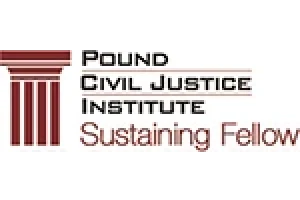Client Reviews
Fire and Explosion Accidents
When it comes to the occupational risk of fire and explosions, construction workers are at especially heightened risk due to the nature of their job.
At Associates and Bruce L. Scheiner, Attorneys for the Injured, we know workers exposed to an explosion or fire on-the-job are at risk for a host of serious injuries, including severe burns, lung scarring, vision and hearing loss and death.
Many construction sites contain flammable, explosive materials and gases. These might include methane, coal dust, petrol and hydrogen. There are also open flames, unfinished wiring and temporary sources of heat and light that could pose a risk.
According to the Occupational Safety & Health Administration (OSHA), approximately 3 percent of all workplace fatalities stem directly from fires and explosions. This may seem a small figure, but the fact is almost all of these incidents are foreseeable and preventable.
Companies owe workers a duty to maintain a safe working environment. Exposing workers to fire risks and explosion hazards – and failing to warn them of it – may constitute negligence.
Workers harmed by an employer’s negligence cannot sue the company, but do have the right to recover workers’ compensation benefits. Depending on the underlying circumstances of the case, there may be opportunity to pursue a third-party lawsuit against other entities, including subcontractors, general contractors, property owners, chemical manufacturers, equipment manufacturers and other responsible parties.
OSHA Requires Safe Work Sites
Safety and health regulations for the construction industry – including those rules pertaining to fire and explosion prevention – are contained in OSHA’s Standard Number 1926 Subpart F.
Among those requirements listed in this subsection:
- Employers are responsible for the development of a fire protection program to be followed throughout all phases of construction and demolition work, and shall provide certain specified firefighting equipment (adequate water supply, fire extinguishers, hoses) in conspicuous locations.
- Equipment for light, heat and power and electrical wiring has to be installed in compliance with certain standards.
- Internal combustion engine-powered equipment has to be located so exhausts are well away from combustible materials.
- Smoking is to be barred in areas where it could constitute a fire hazard.
- Equipment used to store, handle or use flammable gases or liquids have to be approved for certain hazardous locations.
- No temporary building can exist where it would adversely impact the means of egress.
- Where there is danger of an underground fire, that land can’t be used for flammable or combustible storage.
- Clearance has to be maintained around all heating units and lights to prevent ignition of combustible materials.
- Flammable liquids can’t be stored in areas of egress.
- Containers can’t be filled with petrol inside a 50-foot distance of the nearest building.
- Sufficient ventilation in the form of either fresh air or mechanical ventilation must be provided to all workers.
- Areas where temporary heaters are used in confined spaces must be carefully surveyed to ensure sufficient ventilation and safety.
Unfortunately, not every work site ensures these precautions are taken.
One of the leading causes of construction fires is the use of open-flame torches. These tools are often used to weld, cut or solder metal or to adhere roofing materials. But the possibility of that flame coming in contact with ignitable materials is high. Consider too that ember flares can ignite many hours after initial contact.
In older locations where there is renovation or demolition, there is also concern about old, faulty wiring. Improper storage of flammable materials is another major problem.
Some examples of recent construction site fires include:
- A Cleveland Clinic annex building under construction in Weston, FL was the site of an explosion and fire that occurred when fire officials say a 100-pound propane tank used by the roofing company exploded.
- A 172-unit apartment complex under construction near AT&T Park in San Francisco was the site of a major construction fire, which authorities say was likely caused by welding on bare wood floors on the roof by subcontractors.
- Firefighters rescued a construction worker from a five-alarm blaze in Houston, where officials investigating the apartment complex fire suspect a welding accident was to blame. Several workers had been on the roof welding just before the fire broke out on the windy day.
Injuries sustained by workers as a result of construction fires or explosions can be severe, and it’s unlikely workers’ compensation will cover expenses. Our experienced team of legal professionals is dedicated to a full examination of potential causes in an effort to identify any third parties that may be liable to cover medical bills, lost wages and compensation for pain and suffering.
Contact Associates and Bruce L. Scheiner, Attorneys for the Injured, for a free and confidential consultation to discuss your rights. There are no fees or costs unless we win. Offices in Fort Myers, Cape Coral, Naples and Port Charlotte.
Call 800-646-1210 for a Free Consultation












